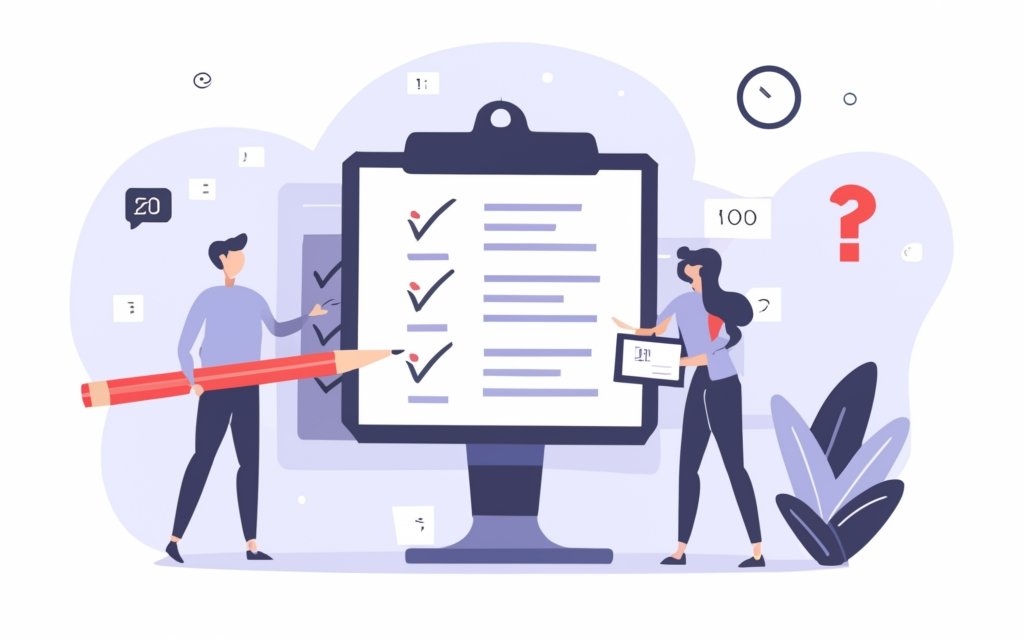
Introduction
Preparing for the CompTIA A+ certification exams can be an intimidating process. With hundreds of concepts to know and understand across multiple technical domains, it’s easy to feel overwhelmed. One of the best ways to build confidence and test your knowledge is by taking practice exams filled with challenging questions.
In this article, we will countdown the top 10 most difficult A+ practice test questions and provide detailed explanations of the answers. You’ll get insights into the specific concepts tested and expert tips on mastering these tricky topics.
Whether you are taking the Core 1 (220-1101) or Core 2 (220-1102) exams, exposure to these complex questions will help reinforce the critical thinking and troubleshooting skills needed to succeed on exam day. Let’s dive in to the top 10!
Understanding CompTIA A+ Exam Format and Question Types
Before highlighting challenging questions, it’s important to understand the structure and format of the A+ practice test exams.
Multiple Choice Questions
The majority of the questions on both Core 1 and Core 2 exams are traditional multiple choice with a single correct answer and three distractors. You will need to analyze the question stem and determine which option best answers the question.
Performance-Based Questions
Both exams also incorporate performance-based questions (PBQs) which present a simulated IT scenario and ask you to solve a more complex problem. These hands-on questions test your ability to analyze issues and apply the proper tools or procedures to address them.
Key Knowledge Domains Tested
The table below summarizes the five major domains covered across the 1001 and 1002 exam objectives:
| Domain | 1001 | 1002 |
|---|---|---|
| Mobile Devices | 15% | – |
| Networking | 20% | 22% |
| Hardware | 27% | 25% |
| Virtualization and Cloud Computing | 11% | 15% |
| Hardware and Network Troubleshooting | 27% | 38% |
Strategies for Tackling Different Question Formats
- Carefully read all multiple choice options before making a selection
- For PBQs, ensure you understand the full scope of the issue before acting
- Leverage process of elimination for difficult questions
- Avoid overthinking simple questions
- Manage your time by budgeting 1.5 minutes per multiple choice question
Now let’s reveal the top 10 most challenging A+ practice test questions!
#10 Hardest Question on RAM Speeds and Types
One topic many A+ students struggle with is understanding the intricacies between the different types of RAM and their associated speeds. Here is an challenging practice test question:
Which RAM speed rating indicates data transfer at a rate of 3200 million transfers per second?
A) PC3-25600
B) PC2-3200
C) PC4-25600
D) PC3-3200
Answer: D
The key here is recognizing that DDR RAM speeds are indicated by the “PC” rating in their naming convention. The number following the first dash indicates the theoretical transfer rate in megatransfers per second. So PC3-3200 can transfer 3,200,000,000 bytes per second.
This questions tests your understanding of how RAM speeds are documented and calculated. Be sure to memorize the naming conventions and how to translate them to actual transfer speeds.
#9 Most Difficult Question on TCP/IP
Networking concepts including TCP/IP are central to the A+ exams. Here’s a practice question that trips up many test takers:
Which ports does SNMP use to monitor and manage network devices?
A) TCP 80, TCP 443
B) UDP 67, UDP 68
C) TCP 22, TCP 3389
D) UDP 69, UDP 161
Answer: D
This question requires you to know that SNMP, the Simple Network Management Protocol, relies on UDP ports 161 for general SNMP services and UDP 69 for SNMP trap messages. Trap messages alert administrators of network issues.
Make sure you commit the most common TCP and UDP ports to memory and understand what types of traffic they carry. Having strong foundational knowledge of networking protocols is key for A+ and beyond.
#8 Challenging Question on Windows Installation
Both the 220-1001 and 220-1102 exams test your skills with installing, upgrading, and repairing operating systems like Windows 10. Here is one complex practice question:
A user reports their Windows 10 computer is failing to boot properly after a recent set of Windows Updates. However, the system boots successfully when using Last Known Good Configuration. What is the MOST likely cause of the issue?
A) Faulty hard drive
B) Corrupted registry
C) Failed Windows Update
D) Misconfigured DRIVER
Answer: C
This question demonstrates why understanding Windows OS troubleshooting is so important. Even a faulty Windows Update can prevent booting. Using Last Known Good Configuration proves it’s not a hardware flaw.
When preparing, research common OS issues like failed updates, driver problems, and boot errors. Knowing multiple methods for recovering from OS issues is critical for both exams.
#7 Tricky Question on Mobile Device Synchronization
While mobile device topics are only on the Core 1 exam, they can still present tricky questions like this:
An end user is attempting to sync an Android device to their email server but receives a connection error. Other devices are syncing successfully. What is the MOST likely cause of the sync failure?
A) Weak WiFi signal
B) Outdated OS
C) Disabled Bluetooth
D) Security policy blocking connection
Answer: D
Understanding mobile OS platforms is key. Issues like WiFi, Bluetooth, and OS version tend to affect connectivity broadly, not just a single device. A policy blocking sync is the most probable root cause.
Expect mobile-related scenarios on Core 1. Brush up on topics like Android, iOS, synchronization, encryption, and troubleshooting. Mobile may only be 15% but the questions can be surprisingly tricky!
#6 Complex Question on Virtualization
Here is a challenging virtualization question from the Core 1 exam:
An organization is implementing a new virtual server infrastructure. Several production servers need to share access to a single 1TB storage location on the SAN. Which virtual configuration would BEST meet this need?
A) Create a virtual switch
B) Configure a virtual datastore
C) Add a virtual machine template
D) Build a virtual private cloud
Answer: B
This question tests your understanding of storage configuration in a virtual environment. A virtual datastore enables multiple VMs to access shared storage resources like a SAN. Virtual switches, templates, and private clouds may be part of the environment but do NOT meet the specific shared storage need.
Expect many questions that test how well you comprehend virtual machine configuration, networking, and storage. Know the vSphere and Hyper-V platforms extensively across all their components.
#5 Confusing Question on Network Topologies
You must be well-versed in networking architectures, protocols, hardware, and troubleshooting for A+. Here is one practice question students often struggle with:
An organization wants to implement a new LAN infrastructure with a fault tolerance of one switch failure. Which topology should be used?
A) Mesh
B) Star
C) Ring
D) Partial Mesh
Answer: D
This question is tricky because it doesn’t specify the number of switches to be used. Any topology CAN provide fault tolerance if properly designed. But partial mesh is the ONLY one that guarantees tolerance of one switch failure by default.
Make sure you understand the technical details of wiring closets, switch design, and redundant topologies. Networking is one of the biggest A+ domains for a reason!
#4 Hard Question on IT Disaster Recovery
Both Core exams test your grasp of IT best practices and protocols surrounding backup, disaster recovery, and incident response. Consider this tough practice question:
An IT manager needs to design a disaster recovery plan with a RTO of 8 hours. Which backup methodology would be BEST suited to meet this RTO?
A) Grandfather-Father-Son
B) Incremental
C) Differential
D) Disk Imaging
Answer: D
Meeting an 8 hour RTO requires restoring systems quickly from backup. Imaging allows full system restores faster than file or block-level backups like incremental or differential. RTO and backup method alignment is key!
Know the recovery time and restoration tradeoffs for ALL backup types, retention schemes, and replication methods. Expect scenarios on contingency planning and also data destruction requirements.
#3 Most Difficult Question on Malware Removal
As security threats evolve, questions testing malware removal have increased. Analyze your skills with this challenging practice question:
A user reports their laptop is displaying unknown popup ads and is running slower than normal. After investigation, the technician suspects adware. Which of the following tools should the technician use to remove the adware?
A) REGEDIT
B) SERVICES.MSC
C) MSCONFIG
D) MALWAREBYTES
Answer: D
This multi-layered question starts with a basic malware symptom analysis. Slowness and popups indicate adware. From there, you must know Malwarebytes is the best tool for removing adware since antivirus software may not catch all variants. REGEDIT, SERVICES, and MSCONFIG are the incorrect choices used for other issues.
Understand holistic troubleshooting approaches across security, performance, and configuration issues. Also brush up on remediation steps for malware, rootkits, viruses, spyware, ransomware and phishing.
#2 Extremely Complex Question on RAID
RAID drives are a central element of modern storage systems. But fully grasping the nuances can be difficult. Test your mettle with this question:
An organization needs to configure a RAID 5 array using six 1TB hard drives. What is the MAXIMUM capacity and number of failed drives supported?
A) 4TB, 1 failed drive
B) 5TB, 1 failed drive
C) 5TB, 2 failed drives
D) 6TB, 1 failed drive
Answer: B
RAID questions require you to calculate capacities based on overheads and also know failure tolerances. This asks for MAX capacity and failure tolerance in a 6 drive RAID 5.
RAID 5 uses parity stripes so 1 drive can be lost without data loss. 6 drives x 1TB each = 6TB. But RAID 5 uses 1 drive worth of space for parity, so 6TB – 1TB = 5TB max capacity.
Really challenge your skills with all RAID configurations. Expect scenarios on troubleshooting degraded arrays and rebuilding failed drives too!
#1 Hardest Question on Customer Service Skills
Think you know it all about hardware and networking? Don’t neglect the customer service domain tested on both exams! Here is a doozy of a practice question:
A user calls the help desk to complain their laptop does not have enough storage space after a recent upgrade. They demand to speak to a manager about receiving a new laptop. Which of the following is the BEST response from the technician?
A) Inform the user that upgrades require manager approval. Offer to transfer them.
B) Tell the user that upgrades may not increase capacity. Offer troubleshooting tips.
C) Apologize for the confusion and ask probing questions to clarify the exact issue.
D) Request the user submit an email detailing their experience so it can be documented.
Answer: C
Dealing with difficult customers is never fun! But showing empathy and gathering details is always the BEST first response. Making assumptions or ignoring complaints will escalate frustration. Probing clarifying questions can ease tensions and lead to resolutions.
From communication skills to documentation procedures, expect LOTS of soft skill testing on both Core 1 and Core 2. Brush up on help desk best practices and your customer support finesse!
Key Takeaways for Mastering Challenging A+ Concepts
I hope revealing these top 10 challenging A+ practice questions shed insights into some of the exam’s toughest topics. Here are my key tips for mastering difficult concepts on the Core 1 and Core 2:
- Use Multiple Study Resources – No single book, course, or A+ practice test will cover everything. Utilize multiple learning tools to reinforce weak domains.
- Read Explanations for ALL Questions – Even ones you answer correctly will build analytical skills needed for tricky PBQ scenarios.
- Focus on Memorizing Key Details – Port numbers, pin counts, speeds, protocols etc. Commit them to memory through flashcards or games.
- Attempt Practice Tests Under Timed Conditions – Train your brain and timing by taking full practice exams under the 90 minute time limit.
I wish you the absolute best as you continue your A+ preparation journey! Stay focused on mastering all objectives, especially the challenging ones. Consistent, diligent preparation will have you passing both Core exams on your first attempt!


